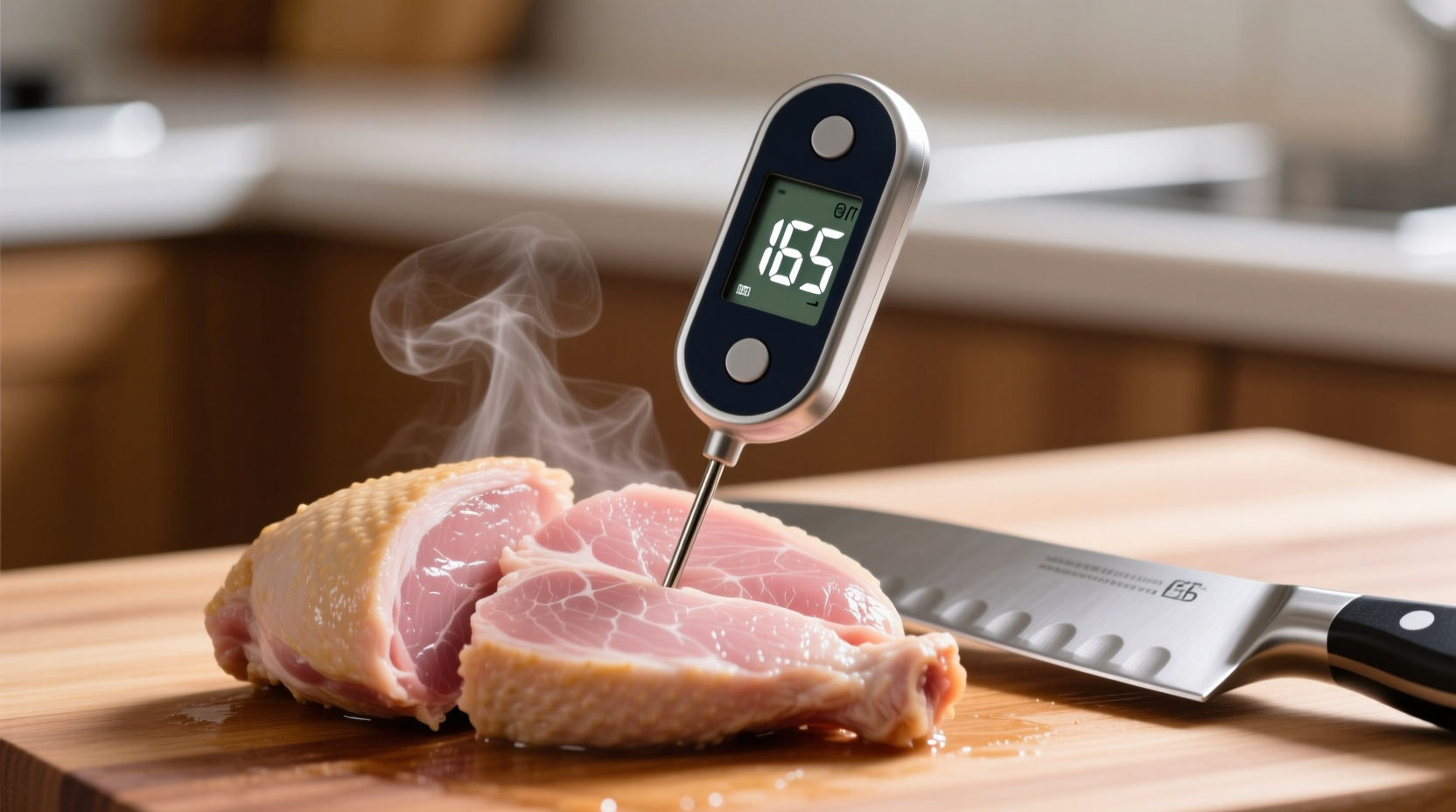The safe internal temperature for cooked chicken is 165°F (74°C) as measured by a food thermometer in the thickest part of the meat. This temperature destroys harmful bacteria like salmonella while preserving moisture when proper resting techniques are used. Never rely on color or texture alone to determine doneness.
Many home cooks struggle with chicken because they either undercook it (risking foodborne illness) or overcook it (resulting in dry, tough meat). The solution lies in understanding precise temperature control throughout the cooking process. Let's explore how to consistently achieve safe, juicy chicken every time.
Why Temperature Matters More Than Appearance
According to the USDA Food Safety and Inspection Service, chicken must reach 165°F (74°C) to eliminate Salmonella and Campylobacter bacteria that cause food poisoning. These pathogens don't change the meat's color, which means perfectly pink chicken can be safe while uniformly white chicken might still be dangerous.
| Chicken Cut | Recommended Temp | Resting Time |
|---|---|---|
| Whole Chicken | 165°F (74°C) | 15-20 minutes |
| Chicken Breast | 160-162°F (71-72°C) | 8-10 minutes |
| Thighs/Drumsticks | 170-175°F (77-79°C) | 10-12 minutes |
| Ground Chicken | 165°F (74°C) | 5 minutes |
The Science of Carryover Cooking
Professional kitchens leverage a phenomenon called carryover cooking, where meat continues to rise in temperature after removal from heat. When you pull chicken breast at 160-162°F (71-72°C), the residual heat will carry it to the safe 165°F (74°C) mark during resting. This technique prevents the overcooking that makes chicken dry.
The FDA Food Code confirms that proper resting time allows heat to distribute evenly through the meat while enzymes break down tough fibers. For chicken breast, this means pulling it 3-5 degrees below target temperature gives you safety without sacrificing moisture.

Proper Thermometer Technique: Avoiding Common Mistakes
How you measure temperature matters as much as the number itself. Insert your thermometer into the thickest part of the meat, avoiding bones which conduct heat differently. For whole chickens, check both breast and thigh areas since they cook at different rates.
Instant-read thermometers provide the most accurate results for home cooks. The National Center for Home Food Preservation recommends calibrating your thermometer monthly by testing it in ice water (should read 32°F/0°C) or boiling water (212°F/100°C at sea level).
Cooking Methods and Temperature Management
Different cooking techniques require specific temperature approaches:
- Grilling: Use two-zone fire (hot side for searing, cooler side for finishing). Pull breasts at 155°F (68°C) to reach 165°F (74°C) during resting.
- Oven Roasting: For whole chickens, start at 425°F (220°C) for 15 minutes, then reduce to 375°F (190°C) until reaching target temperature.
- Pan-Seared: Sear skin-side down first, then finish in 400°F (200°C) oven until thermometer reads 160°F (71°C) in breast.
- Sous Vide: Cook at precise 145°F (63°C) for 1.5 hours for pasteurization, then sear briefly to 165°F (74°C).
Troubleshooting Temperature Issues
Problem: Chicken reaches 165°F but is still pink near bones
Solution: This is normal myoglobin discoloration, not undercooking. Verify with thermometer in multiple spots.
Problem: Chicken dries out before reaching safe temperature
Solution: Brine for 1-4 hours before cooking or use butterflying technique to create even thickness.
Problem: Temperature stalls during cooking
Solution: This happens with larger cuts as moisture evaporates. Maintain consistent heat and be patient—don't increase temperature.
Advanced Temperature Strategies
For truly exceptional results, consider these professional techniques:
- Dry Brining: Salt chicken 24 hours before cooking to improve moisture retention at target temperatures
- Temperature Layering: Cook dark meat slightly hotter than white meat for optimal texture in whole birds
- Reverse Searing: For thick cuts, start at low oven temperature (275°F/135°C) until internal reaches 150°F (66°C), then finish with high-heat sear
Remember that altitude affects cooking temperatures—boiling point decreases by about 1°F for every 500 feet above sea level. Adjust cooking times accordingly when living at higher elevations.











 浙公网安备
33010002000092号
浙公网安备
33010002000092号 浙B2-20120091-4
浙B2-20120091-4